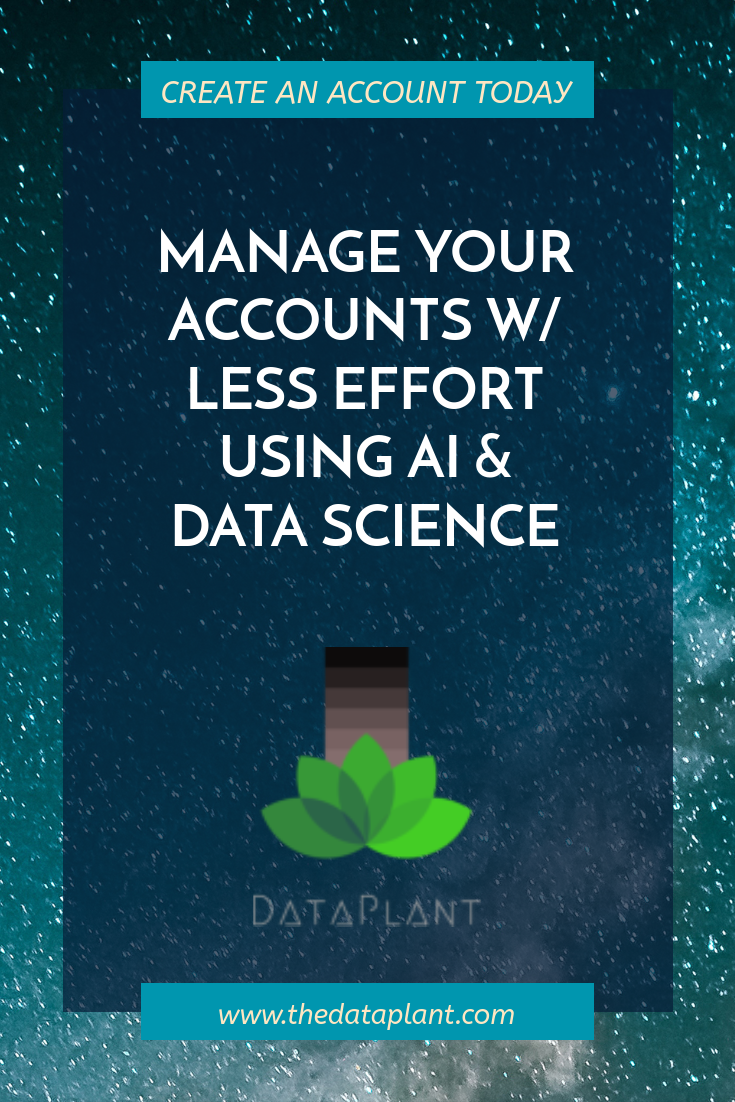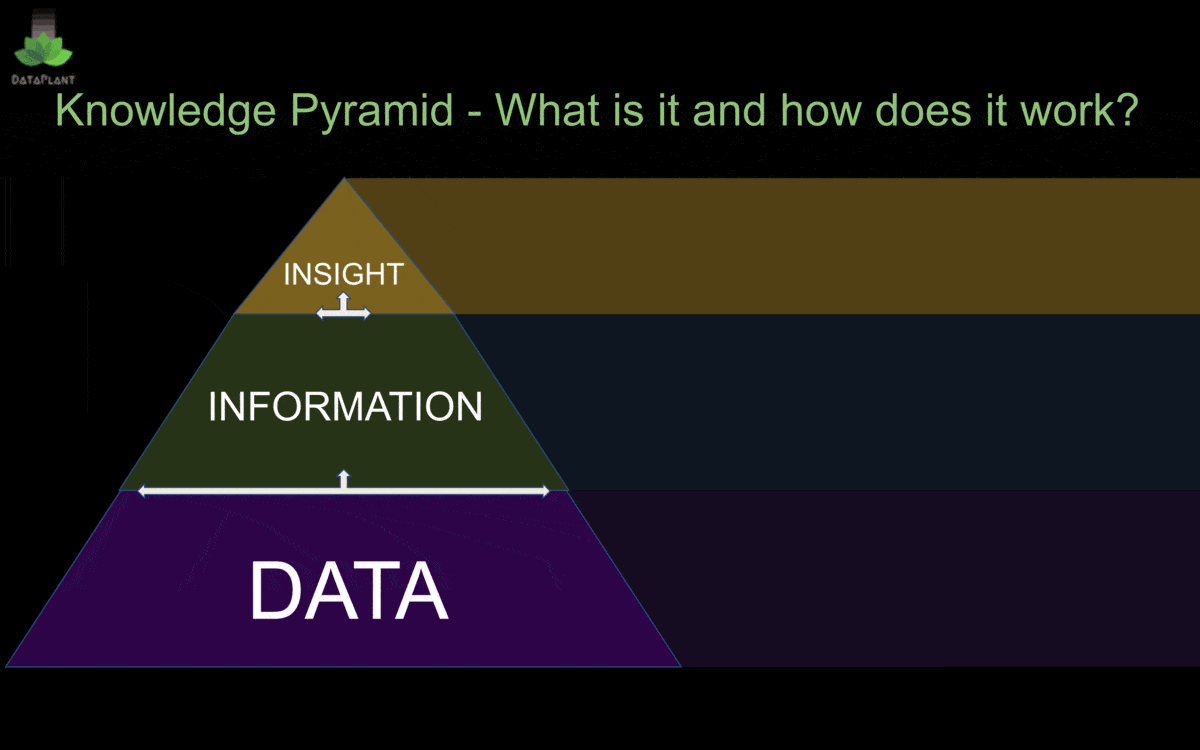
The Most Powerful Tool in Customer Success Is the Knowledge Pyramid?
Now that we are 5 months into the year and 2022 is off to the races. Customer Success has continued to grow year after year. According to Marketsandmarkets.com the customer success industry is expected to grow to 2.5 billion by 2025 from the 1.1 billion that is estimated today.
Growth is always good. But one thing that is important to note here is companies will need people more than ever to build out the systems and automation to power this growth. This is where CS operation comes into the fold. Whether you are a CS administrator today or not , no need to worry. I am opening a new blog series called CS Cheat Codes to help arm current admins and those looking to get into the field alike to take the best of the best practices and strategies and apply them to their companies goals. Over the next few months we are going on an epic journey. Everything you thought you knew about CS Operations is about to be turned upside down. By the end of this series you will have the tools and experiences to be the best CS admin. Before we get too far ahead of ourselves let's start with the basics.
KNOWLEDGE PYRAMID
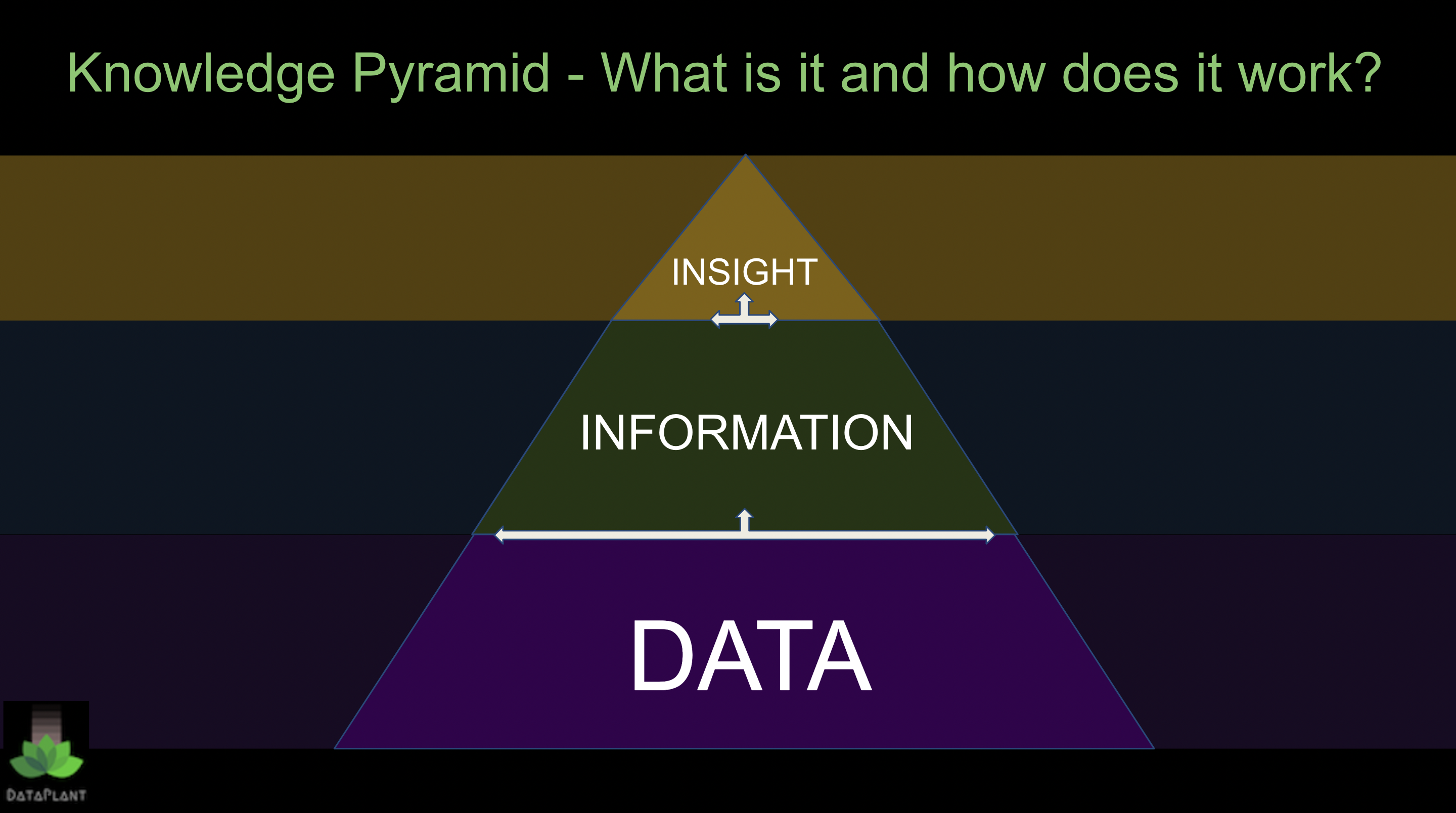 DATA LAYER
DATA LAYER
 INFORMATION LAYER
INFORMATION LAYER
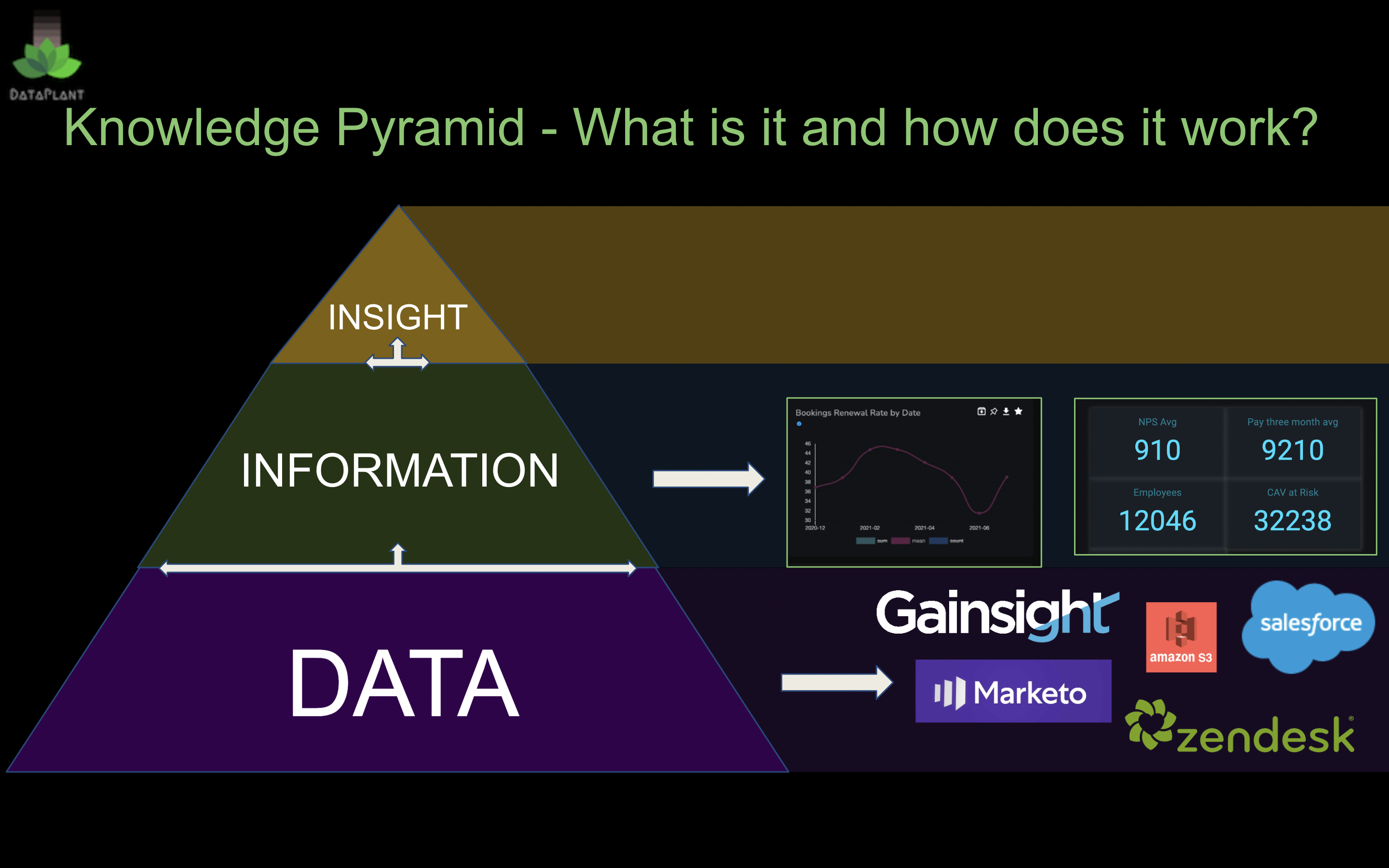
The big difference between data and information is context. Context gives data perspective. For example if I have a list of accounts as mentioned before stored in Salesforce and each record has a field that stores the date that those clients renew. Some of those dates might be more important than others. If a client has a renewal in 30 days and another client has a renewal sometime next year. I might prefer to work with one over the other. This priority is what we call context. Context is not inherit to data itself. For this reason as a CS admin you must perform transformations to convert the raw date fields into some sort of contextual score or label. Using automation I can create a rule that says if a client has a date that is more than 30 days out then update a new field with the label of healthy and vice versa if a client has a renewal date less than 30 days then mark them at risk. By creating this new field called Renewal status I have now just added context to each of the clients and in turn have created organized information. As shown in this example information is dependent on data. Information is structured, organized or has context whereas data by itself is meaningless facts.
DATA VS INFORMATION
| DATA | INFORMATION |
|---|---|
| Data is unorganized and unrefined | Information is processed, organized data with meaningful context |
| Raw data alone is insufficient for decision making | Information is sufficient for decision making |
| List of renewal dates for each client | Customer renewal status label based on number of days out |
We live in the information age. Since the advent of internet and social media. We have an abundance of information at our finger tips. We can at any moment learn information about any subject. Although information is more useful than data. Information by itself can be just as noisy. You can act on any information. This does not mean that the information that you act on is accurate or useful. If I told you there were 400 peanuts in 1 jar of peanut butter that would be information as you would know that on average it takes 400 peanuts to make 1 jar of peanut butter. But that would not be useful as it would not help you make a better peanut butter and jelly sandwich. That is where the next layer comes in: INSIGHT
INSIGHT LAYER
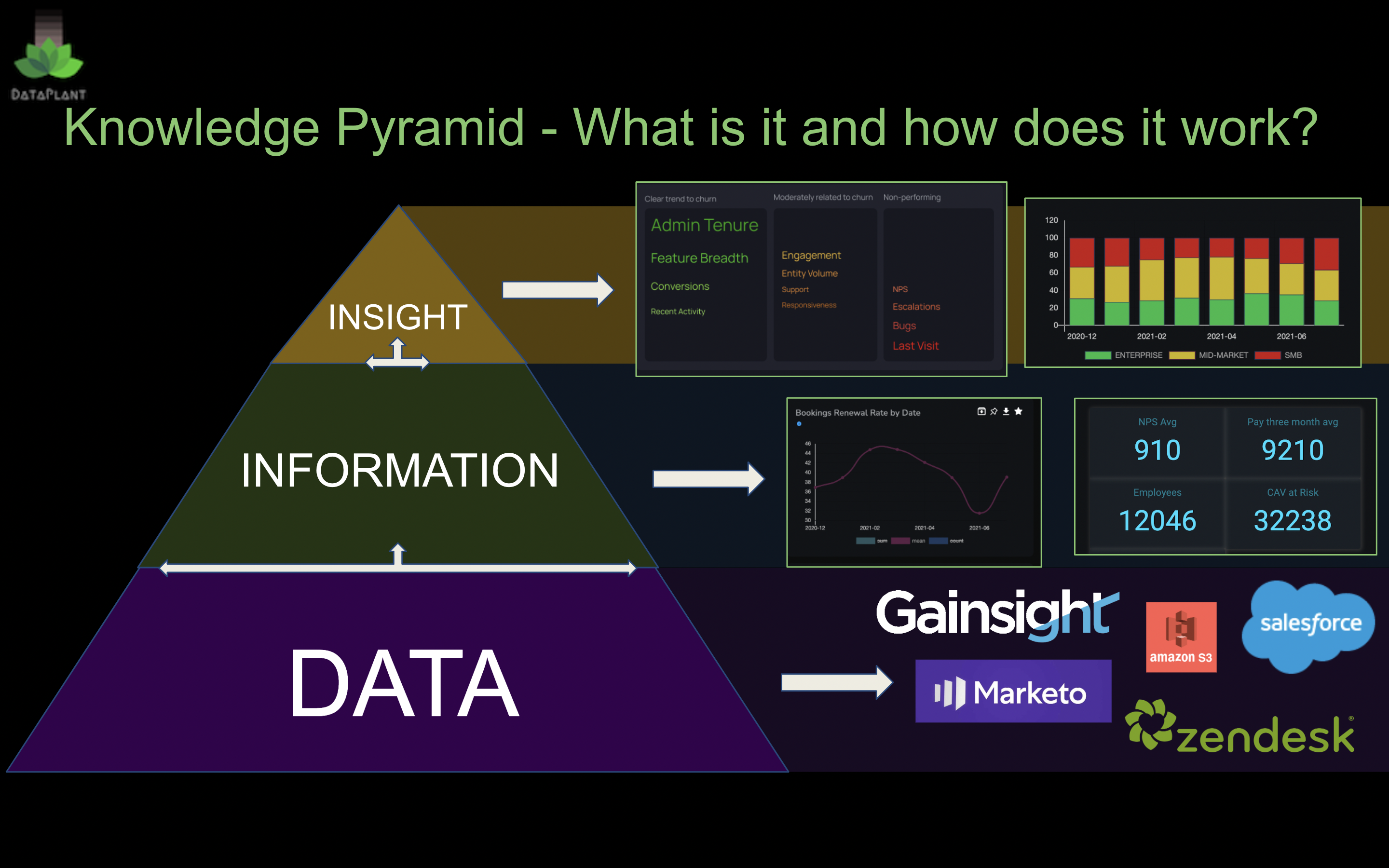 INFORMATION VS INSIGHT
INFORMATION VS INSIGHT
| INFORMATION | INSIGHT |
|---|---|
| Information is actionable but not necessarily useful | Insight is actionable and useful |
| Information by itself can be irrelevant to making a decision | Insight is information that is relevant to make a decision |
| List of accounts who spent 90% of thier budget | List of accounts most likely to spend over 90% of their budget |
As you can see the difference is subtle. But now that we understand what the Knowledge Pyramid is and how the different layers of it differ from each other. Next week we will take a look at how that Knowledge pyramid can be used to create solutions for CS problems. Before you build your next dashboard or configure your next call to action for your team. Start with the knowledge pyramid.
If you enjoyed this article, please Subscribe. Let me know your thoughts at sam @ thedataplant.com or share this article with someone else you think will find it valuable. I have lots of other blogs and insight rich content on our site or on the way for you to enjoy. Until next time. Sam C.

